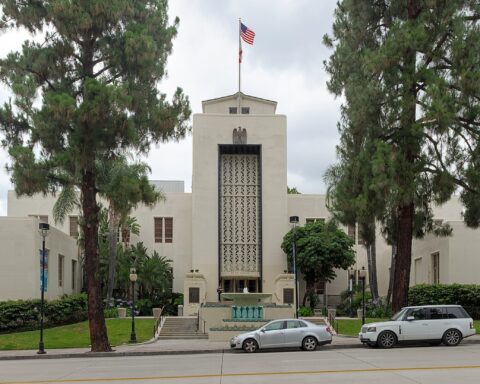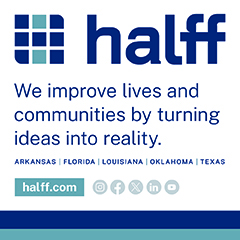Infrastructure success stories in some states could point the way for states that are stagnating or falling behind. America’s infrastructure needs improvement, with the most recent American Society of Civil Engineers (ASCE) 2025 Infrastructure Report Card giving the nation a C rating. The ASCE also gives individual state scores on a rolling basis, and reports from the past five years show a clear pattern of where infrastructure is improving and where the biggest opportunities are.
In scores released in 2024 and 2025, Maine, Wisconsin, Mississippi and Alaska have improved their grades, while scores in Montana and Texas have declined. In reports from 2020 and 2021, West Virginia and South Carolina recorded some of the lowest infrastructure grades in the nation. Hawaii, Louisiana and Puerto Rico have also scored at the bottom in their most recent report cards, but ASCE has not released updated scores for any of these jurisdictions in the past five years.
These state-level findings highlight how implementation strategies and funding priorities can lead to different outcomes, even with an influx of federal dollars through the 2021 Infrastructure Investment and Jobs Act. As the nation faces an estimated $3.7 trillion infrastructure funding gap over the next decade, these disparities highlight areas ripe for dramatic improvement and the keys to success in regions that have stepped up their infrastructure performance.
Slipping Scores: Montana and Texas
Montana’s grade fell from a C in 2018 to a C- in December 2024. The state’s rapid population growth and increasingly severe weather events are straining its infrastructure. Bridge conditions dropped from a C to a C- despite $45 million from the Infrastructure Investment and Jobs Act. This funding was not enough to keep up with an estimated $400 million in annual needs.
The state’s energy infrastructure also declined to a C-, reflecting an aging grid struggling to support renewable energy integration and increasing power demands in a state that ranks fourth nationally for per capita energy consumption.
Texas maintained an overall C grade in its February 2025 assessment due to two categories improving, but six categories declined from 2021. Water infrastructure is particularly concerning, with drinking water dropping to a D+ and wastewater falling to a D-. The vulnerability of Texas water systems was demonstrated during winter storm Uri in 2021, when 40% of water utilities issued boil water notices. Despite improvements in aviation (B) and roads (C-), and a solid bridges grade (B-), water system deficiencies offset these gains. Texas has recognized the need to upgrade water infrastructure, with the $1 billion Texas Water Fund already in action and the state legislature considering allocating more money to the cause.
Ripe for Opportunity: South Carolina and West Virginia
South Carolina received a D+ in its first-ever infrastructure report card in 2021. The state’s drinking water systems face significant challenges, with the EPA projecting nearly $6 billion in needs over the next 20 years, including $4.5 billion just to replace aging distribution and transmission pipelines. Road infrastructure received a D grade despite increased gasoline taxes. The funding gap is estimated at $43 billion over two decades, explaining why more than half of South Carolina’s roads remain in poor condition.
West Virginia received a D overall grade in its 2020 assessment. Some drinking water systems lose more than half their treated water through distribution systems. The state’s rugged topography makes locating and fixing leaks particularly difficult. The Mountain State’s bridge network is also concerning, with 21% of its bridges rated structurally deficient — nearly triple the national average of 7.5%. Repair costs are estimated at $2.9 billion.
These are the lowest grades ASCE has given in the past five years.
Moving Up: Alaska, Maine, Mississippi and Wisconsin
Wisconsin earned an overall C+ in its September 2024 report. The state effectively utilized over $2 billion in federal surface transportation funding, improving its roads from a D+ to a C. Wisconsin became the first state to include graded broadband in its assessment, recognizing it as “the fourth utility” after roads, water and energy. The C- grade for broadband acknowledges progress while noting a $1 billion funding gap to achieve universal access by 2030.
Maine achieved a C grade in December 2024, improving on its previous C- score. Six of Maine’s 16 infrastructure categories improved, with aviation earning a B and ports and rail receiving B- grades. The Maine Department of Transportation’s 2024-2026 work plan allocates $4.74 billion — an 83% increase over its 2020-2022 plan. This increased funding improved road conditions, with 74% of state highways now in good or excellent condition compared to 60% in 2012.
Mississippi improved from a D+ to a C- in November 2024. Four categories—bridges, dams, rail and solid waste—saw grade increases, with rail earning a B grade. The state’s bridges improved two grade levels from D- to D+, with the percentage of bridges in poor condition dropping from 9.8% to 6.3% over four years. Port infrastructure maintained a B- grade, generating $17 billion in annual economic impact.
Alaska improved to a C grade in February 2025, with bridges earning a B+ grade. The state has received $9.3 billion in federal infrastructure funding, supporting nearly 4,000 projects, with 17% directed toward broadband and 15% to clean water initiatives.
Common Success Factors
Improving states have implemented dedicated funding mechanisms that go beyond one-time allocations or general funds. Maine’s transportation funding model combines gas taxes with vehicle registration fees and bonds to ensure consistent revenue, while Wisconsin has effectively leveraged both federal dollars and local funding to maximize impact. These states employ strategic prioritization, focusing resources on highest-impact categories first. Mississippi targeted bridge repairs after identifying them as critical safety concerns, reducing poor-condition bridges by 3.5% in four years.
Regional consolidation has proven especially effective for water and wastewater systems; larger utilities in Maine and Alaska provide technical expertise to smaller communities through formal partnerships, helping rural areas access specialized engineering knowledge without maintaining full-time staff. Public education campaigns about infrastructure costs have also proven critical. Wisconsin’s Department of Transportation produces annual citizen-friendly reports explaining how infrastructure investments directly impact commute times, safety and economic development, building popular support for necessary spending increases.









